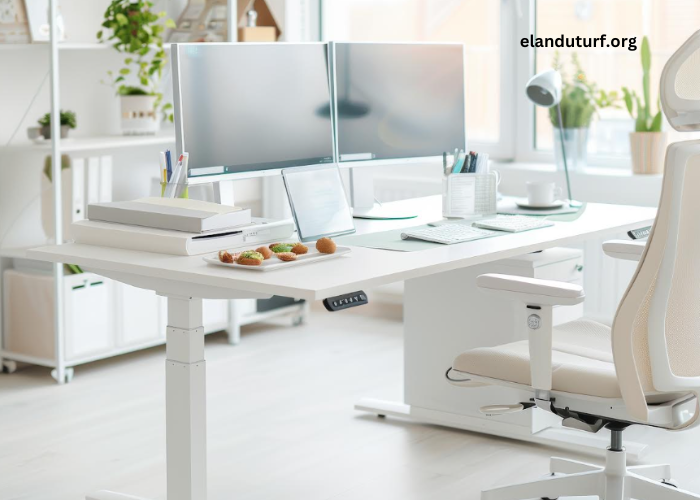A sit-stand desk is an increasingly popular choice for many workplaces worldwide, and this is for some good reasons. With claims of correcting posture issues, fixing back pain, boosting productivity, etc, it is easy to see why this desk design is so popular. But how true are these claims? Well, this article takes a look at the benefits of sit-stand desks in detail to help you understand how well this desk works.
Reduced Risk of Chronic Diseases
Research has shown that prolonged sitting is linked to various health issues, including heart disease, obesity, diabetes, and even certain cancers. Sitting for extended periods can negatively affect the body’s metabolism, causing a decrease in circulation, insulin resistance, and increased fat storage. By using a sit stand desk, you can combat these risks by incorporating periods of standing in your workday, thereby improving circulation, boosting metabolism, and reducing the risk of developing chronic diseases.
Improved Posture and Reduced Back Pain
Sitting for long hours in one position can lead to poor posture and a host of musculoskeletal problems, most notably lower back pain. The constant pressure on the spine and muscles while sitting for extended periods can cause discomfort, stiffness, and even injury over time. A sit-stand desk offers the flexibility to alternate between sitting and standing positions, allowing your body to change its posture frequently. This dynamic movement helps to alleviate strain on the lower back, neck, and shoulders, promoting better posture and reducing the chances of developing chronic pain.
Studies have consistently shown that individuals who use sit-stand desks report significant reductions in back pain and discomfort, especially in the lower back. By regularly switching between sitting and standing, users engage different muscle groups, preventing the muscle imbalances that contribute to pain.
Increased Energy Levels and Productivity
Another key benefit of using a sit-stand desk is the increase in energy levels throughout the day. Sitting for prolonged periods can lead to fatigue, sluggishness, and a decrease in focus. When standing, the body is more active, and blood flow is improved, leading to greater alertness and energy. This heightened energy can translate into improved cognitive function, sharper focus, and better overall performance at work.
Increased energy and focus can also enhance productivity. Research has demonstrated that employees who alternate between sitting and standing report higher levels of engagement and efficiency in their work. The flexibility to move between positions allows individuals to work in a way that suits their personal energy levels, boosting motivation and reducing mental fatigue.
Supports Weight Management
A sedentary lifestyle contributes to weight gain, as the body burns fewer calories when sitting. In contrast, standing requires more energy use, and this can help with weight management. Research has shown that standing burns more calories than sitting, and even small changes, such as standing for short periods during the day, can have a positive impact on calorie burn. A sit-stand desk encourages users to stand and move more frequently, which can help to offset the negative effects of a sedentary lifestyle and support weight loss or maintenance goals.
Improves Mental Well-Being
Beyond physical health, using a sit-stand desk can also have a positive impact on mental well-being. Physical activity, even in small doses, has been linked to better mental health, improved mood, and a reduction in symptoms of anxiety and depression. Standing more throughout the day can help reduce stress levels and increase overall happiness. The freedom to alternate between sitting and standing allows individuals to break up their work routine, potentially reducing feelings of monotony and mental fatigue, leading to improved emotional well-being.
In conclusion, sit-stand desks offer a wide range of benefits, including improved health, better posture, increased productivity, and enhanced well-being. Whether at the office or home, incorporating these desks into your daily routine can significantly improve both physical and mental health, setting the stage for a more productive and fulfilling workday.







